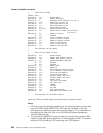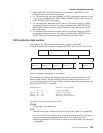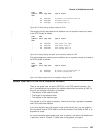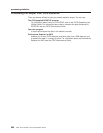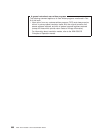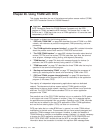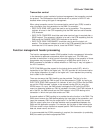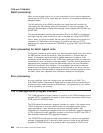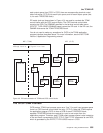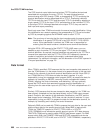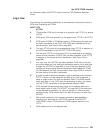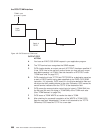
Chapter 26. Using TCAM with CICS
This chapter describes the use of the telecommunications access method (TCAM)
with CICS Transaction Server for OS/390 Release 3.
Important
CICS Transaction Server for OS/390 Release 3 supports only the DCB
interface to TCAM, and not the ACB interface. This means that, in order for
CICS to use it, TCAM has to be run as a VTAM application—it cannot be used
independently of ACF/VTAM.
The chapter is divided into the following sections:
1. “CICS with TCAM SNA” on page 692 describes the use of TCAM in an SNA
network, with reference to protocol management, FMH processing, and error
processing.
2. “The TCAM application program interface” on page 694 includes information
about the process control block and the TPROCESS control block.
3. “The CICS-TCAM interface” on page 695 includes information about terminal
entries (TCTTEs) and line entries (TCTLEs) data flow, logic flow, the terminal
error program, message routing, pooling, and segment processing.
4. “TCAM devices” on page 704 deals with message formats for devices (in
particular, the 3270-system devices) being used on a TCAM line.
5. “TCAM user exits” on page 707 describes the three TCAM exits that may be
specified in the terminal control program.
6. “Starting and terminating TCAM” on page 707 describes the processes of
starting up, restarting after an abend, and terminating TCAM under CICS.
7. “CICS and TCAM: program interrelationship” on page 709 describes the
TCAM message control program (MCP) and its relationship to the application
program (in this case, CICS).
The majority of independent teleprocessing applications require a dedicated
network. The telecommunications access method (TCAM) permits multiple
applications to share a single network, resulting in more efficient use of terminals
and lines. The CICS-TCAM interface enables CICS to run as an application
program under TCAM.
One practical use of the CICS-TCAM interface is to run a production CICS system
in one region and a test CICS system in another. If they run in separate regions,
the applications are protected from one another. Operating under TCAM, terminals
and lines can be shared by the two CICS applications. Other TCAM applications,
such as the time sharing option (TSO), can also run concurrently.
CICS user tasks that run under BTAM can, in general, run under TCAM without
modification to the task code. This assumes that you have correctly designed and
coded the TCAM message control program. However, to obtain the benefits of
TCAM SNA and to maintain an acceptable operator interface, it is usually necessary
to change the CICS application programs to use EXEC CICS CONVERSE and
EXEC CICS SEND LAST facilities so that the MCP is provided with sufficient
information about the transaction to maintain the optimum SNA message flows.
© Copyright IBM Corp. 1977, 1999 691




